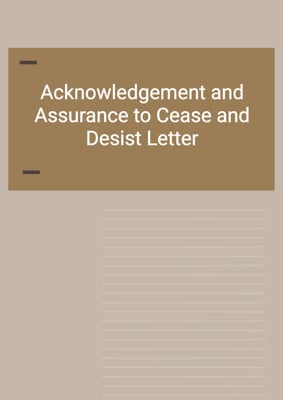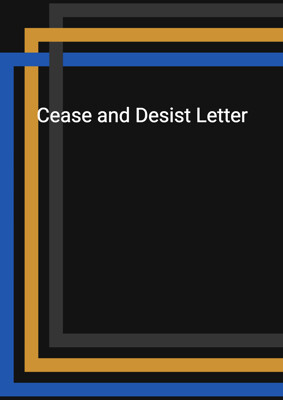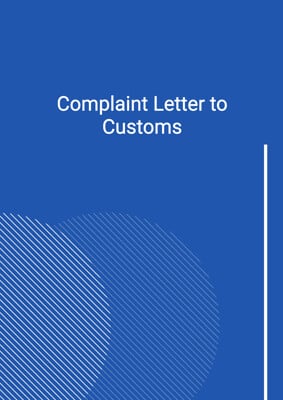How to Tailor the Document for Your Need?
01
Create Document
Click "Create Document" button and the document will be prepared with your account details automatically filled in.
02
Fill Information
Please fill in any additional information by following the step-by-step guide on the left hand side of the preview document and click the "Next" button.
03
Get Document
When you are done, click the "Get Document" button and you can download the document in Word or PDF format.
04
Review Document
Please review the document carefully and make any final modifications to ensure that the details are correct before sending to the addressee.
Document Preview
Document Description
The Cease and Desist Letter is a legal document used to address trademark infringement. The document begins with a brief introduction, stating the purpose of the letter. It highlights the importance of the document by emphasizing the need to protect the company's registered trademark and associated logo design.
The letter provides a detailed explanation of the trademark infringement, pointing out the similarities between the respondent's product and the company's registered trademark. It mentions that not only the spelling but also the artwork and color scheme of the associated logo closely resemble the company's registered design.
The document states that the company has established strong branding and goodwill through the use of the trademark over the years. It emphasizes that the use of the infringing mark creates market confusion, which damages the company's branding, goodwill, and resulting business.
To avoid legal action, the letter requests the respondent to immediately cease and desist the use of the mark and all related infringing activities. It specifically mentions that the respondent must stop promoting and marketing their products/services using the infringing mark on all channels, including their company's website.
The letter warns the respondent about the potential consequences of non-compliance. It states that if legal action is taken, the company would seek preliminary and permanent injunctions, monetary damages, reimbursement of profits made through the infringing trademark, damages to the company's goodwill, and reimbursement of lawyer's fees associated with the legal action.
The document concludes by putting the respondent on notice that the company will closely monitor their use of the infringing trademark and take appropriate legal action if the infringement persists. It sets a deadline of seven (7) days for the respondent to acknowledge and confirm in writing the cease and desist actions to be taken. It warns that failure to comply will result in further legal action to protect the company's interests.
How to use this document?
Guidance for using the Cease and Desist Letter:
1. Identify the trademark infringement: Clearly state the reasons for sending the letter, including the similarities between the respondent's product and the company's registered trademark.
2. Demand immediate cease and desist: Clearly instruct the respondent to immediately stop using the infringing mark and all related activities, including promotion and marketing on all channels.
3. Highlight potential consequences: Clearly explain the potential legal consequences of non-compliance, such as preliminary and permanent injunctions, monetary damages, reimbursement of profits, damages to goodwill, and lawyer's fees.
4. Set a deadline for response: Specify a deadline, usually seven (7) days, for the respondent to acknowledge and confirm in writing the actions they will take to cease and desist.
5. Warn about further legal action: Clearly state that failure to comply will result in further legal action to protect the company's interests.
6. Maintain documentation: Keep a record of all correspondence and actions taken by both parties for future reference.
7. Seek legal advice if necessary: If the respondent does not comply or the infringement persists, consult with a lawyer to explore further legal options and protect the company's rights.
Not the right document?
Don’t worry, we have thousands of documents for you to choose from:




